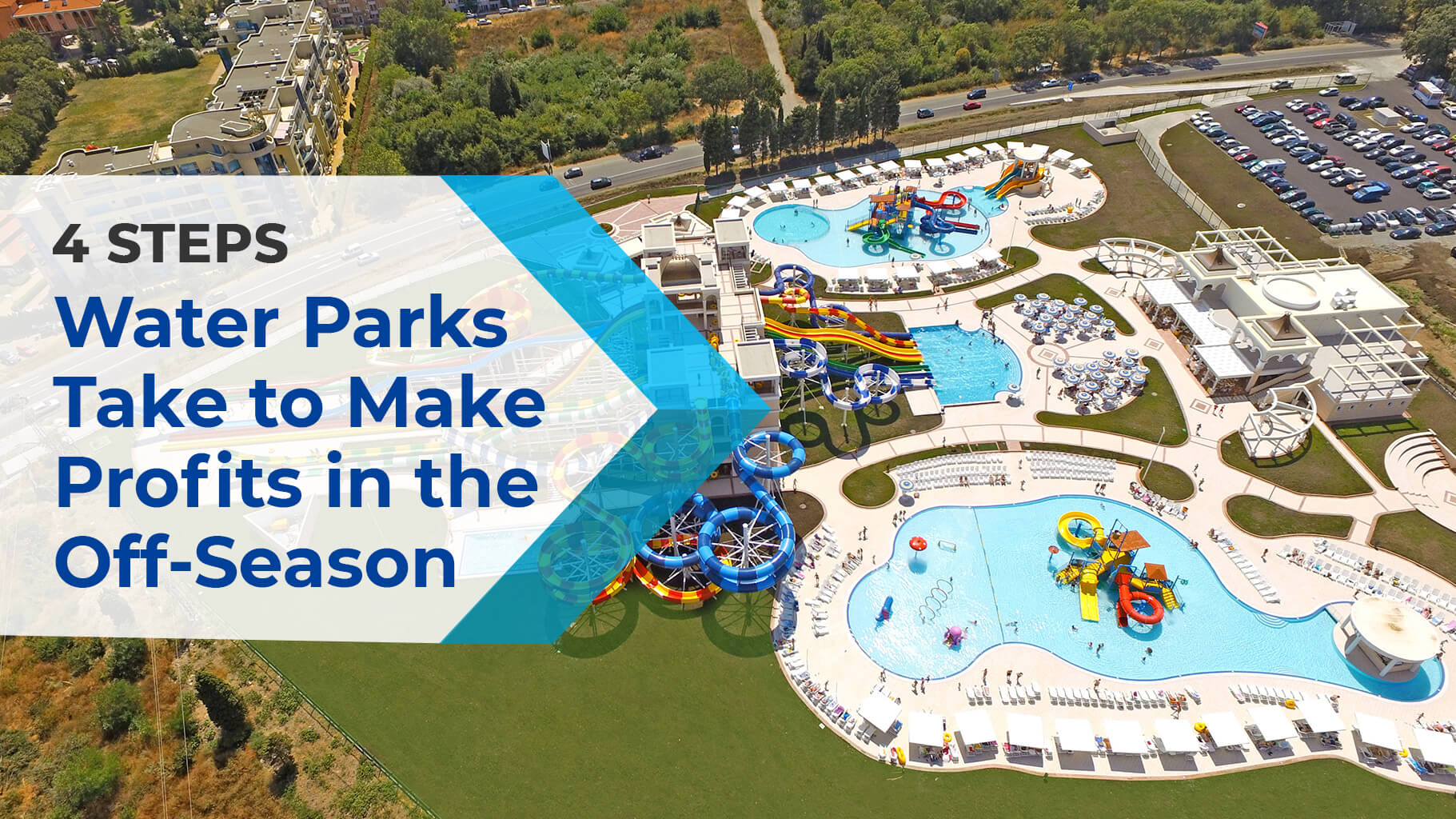Winter is nearing. And while many people revel in the holidays it brings, we know that for the waterpark industry, these months are slow.
In India, where we enjoy tropical climate for the majority of the year, water parks enjoy sufficient visitor influx in the months of April to October. The hot weather persuades people to make trips to the cooling water rides on the outskirts of their cities. The experience is worth the long journey, and they recognize this relief.
Unfortunately, the off-season, largely situated in winter, is defined by only a trickle of visitors from November to March, and it naturally offsets the riches accrued by the park stakeholders prior. Five months of a lack of footfall equates to five months of economic shortage.
This is a natural, cyclical phenomenon water park owners are accustomed to. In this post, we offer 4 common steps owners and their executive officers take to make small profits in this off-season period, getting them back on the path to economic safety.
Use the Cheer of the Festive Season
Even in the tropical paradise of India, the winter temperatures can plunge below what is deemed hospitable for revellers who are considering going to a water park. Your water park will inevitably lack a large percentage of your usual visitor influx no matter what you do. And you will probably shut down regular ride operations to save on operation costs.
To alleviate this, you should use the cheer of festivals to create interest in small pockets of the season. With Diwali and Christmas being the main festivals in this period, late October through early January is the perfect time to set up shows based on decorations, fireworks, and Santa Claus in your water park. Though regular attractions will be closed or at half-capacity, these small attractions are a great way to keep families visiting through the colder months.
Task your stalls and eateries to sell holiday-themed snacks such as Diwali mithai and Christmas cookies. Sell promotional merchandise like apparel, with designs customized around these festivals and their folklore—enticing those who participate in the yearly celebrations!
Build Indoor Sections and Temporary Roofing Structures to Ensure that there is Ample Insulation Inside
Stakeholders would do well to consider an indoor section for the park in winter. This can be a permanent or temporary solution. Contact water park equipment, architectural, and engineering firms in your city to devise a temporary solution to altering a section of your park into an indoor environment. Otherwise, for permanent indoor solutions, your process would have to be planned before the construction of the water park itself.
Winter can get unbearably cold in certain parts of the country, and this naturally requires an insulation solution. In an indoor space, setting up a Heating, Ventilation, and Air Conditioning (HVAC) system becomes a viable option, and you would ensure your patrons are given a warmer experience when walking outside the pools and rides.
Plan Your Water Park with Secondary Attractions
While this is not a direct solution to an already-built water park, it is certainly worth considering for stakeholders and investors who are still in the process of designing a water park. Make sure the area has interactive features like amphitheatres, stadiums, semi-indoor arenas, sports fields, market areas, parking areas, eateries, and more. These secondary features can be used by the public even when the water rides are closed.
These features will enable you to sell these spaces for certain time slots, to third-parties willing to pay. Weddings, parties, community sports events, and more can take place on a regular basis, creating a social identity around your water park, which will result in a greater brand image over time.
For stakeholders who are thinking of extending an already-built park’s borders, these features can be added over time. Commercial and entertainment events—like concerts or day markets—will always make a social difference. They boost revenue, and even if the cashflow is not as frequent as that which tickets generate in peak season, it would be enough to support the employees and infrastructure.
Incentivize the Youth, Target Educational Institutes
In the early part of the calendar, from January to March, you might need to find reasons to entice the younger demographic, who are restarting school and college, to your water park.
School and college trips are one of the biggest streams of income for a water park. Network with primary and secondary schools across the country, who are on the lookout for exciting venues where they can take their students on field trips.
You could also consider partnering with colleges and their student organizations, especially technical and engineering-minded students, who might be interested in the complicated aspects of the electric and mechanical engineering features on the water rides.
A water park that keeps itself busy, even in the time of the year when activity is at a low, not only creates opportunities for recovering revenue and public interest, but also moral and financial support to its seasonal employees. It creates jobs through the off-season and boosts company morale. The water park atmosphere becomes one of festivity, friendliness, and familiarity, despite the economic slowdown.
You can train employees, understand the nuances of off-season, and install winter-friendly water park equipment in your establishment if you contact a well-established player in the industry like Arihant Water Park. We can show you the ropes, giving you the best chance for the coming cold season!

